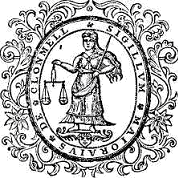CLONMEL
CLONMEL, a borough, market and assize town, and a parish, partly in the barony of UPPERTHIRD, county of WATERFORD, but chiefly in that of IFFA and OFFA EAST, county of TIPPERARY, and province of MUNSTER, 23 miles (W. by N.) from Waterford, and 82 ½ miles (S. W. by S.) from Dublin; containing 20,035 inhabitants, of which number, 17,838 are in the town. This place, of which the origin is ascribed to a period prior to the invasion of the Danes, is supposed to have derived its name from Cluain-Meala, signifying in the Irish language the "plain of honey," in allusion either to the character of its situation and the peculiar richness of the soil, or to the valley in which it stands being bounded by picturesque mountains that afford honey of fine flavour. It appears to have been the capital of the palatine liberty, as it now is of the county of Tipperary; and is probably indebted for its early importance to the patronage of the Butler family. According to Archdall, a Dominican friary was founded here in 1269, but by whom is not known; and the same author states that the Franciscan friary was also founded in that year by Otho de Grandison, though the date inscribed upon it is 1265: this friary was reformed in 1536, by the friars of the Strict Observance, and having been surrendered to the Crown in 1540, was, with its possessions, three years after, granted in moieties to the sovereign and commonalty of Clonmel and the Earl of Ormonde; its church was esteemed one of the most magnificent ecclesiastical structures in the country.
23 miles (W. by N.) from Waterford, and 82 ½ miles (S. W. by S.) from Dublin; containing 20,035 inhabitants, of which number, 17,838 are in the town. This place, of which the origin is ascribed to a period prior to the invasion of the Danes, is supposed to have derived its name from Cluain-Meala, signifying in the Irish language the "plain of honey," in allusion either to the character of its situation and the peculiar richness of the soil, or to the valley in which it stands being bounded by picturesque mountains that afford honey of fine flavour. It appears to have been the capital of the palatine liberty, as it now is of the county of Tipperary; and is probably indebted for its early importance to the patronage of the Butler family. According to Archdall, a Dominican friary was founded here in 1269, but by whom is not known; and the same author states that the Franciscan friary was also founded in that year by Otho de Grandison, though the date inscribed upon it is 1265: this friary was reformed in 1536, by the friars of the Strict Observance, and having been surrendered to the Crown in 1540, was, with its possessions, three years after, granted in moieties to the sovereign and commonalty of Clonmel and the Earl of Ormonde; its church was esteemed one of the most magnificent ecclesiastical structures in the country.
In 1516, the town, which was surrounded with walls and strongly fortified, was besieged and taken by the Earl of Kildare; and during the civil war of the 17th century, having been garrisoned for the king by the Marquess of Ormonde, it was attacked by Cromwell in 1650, with his army from Kilkenny, but was bravely defended by Hugh O'Nial, a northern officer, who, with 1200 of his provincial forces, maintained it with such valour that, in the first assault, not less than 2000 of the besieging army were slain, and the siege was turned into a blockade. After a resolute defence for two months, the garrison, being without any prospect of obtaining relief, secretly withdrew to Waterford, and the inhabitants surrendered upon honourable terms: the town remained in the possession of the parliamentarians till a short time prior to the Restoration, when it was retaken by the royalists. At the Revolution, the town, which was held by the partisans of James II., was abandoned on the approach of William's army to besiege Waterford.
It is situated on the banks of the river Suir, in a beautiful and fertile valley bounded by picturesque mountains, and on one of the two main roads from Dublin to Cork, and that from Waterford to Limerick. With the exception of that portion which is built on islands in the river, it is wholly on the northern or Tipperary side of the Suir, and is connected with the Waterford portion by three bridges of stone. The principal street is spacious, and extends from east to west, under different names, for more than a mile in a direction nearly parallel with the river; the total number of houses, in 1831, was 1532. The town is lighted with gas from works erected, in 1824, by Messrs. Barton and Robinson, of London, who sold them, before they were completed, for about £8000 to the British Gas-Light Company of London, under whom they are now held on lease. The provisions of the act of the 9th of George IV., for lighting and watching towns in Ireland, have been adopted here: the inhabitants are amply supplied with water by public pumps in the various streets. Several newspapers are published, and there are four news-rooms, one of which is a handsome building lately erected at the eastern end of the town, and called the County Club House. At the eastern entrance into the town are extensive barracks for artillery, cavalry, and infantry; behind them, on an elevated and healthy spot, is a small military hospital, capable of receiving 40 patients.
